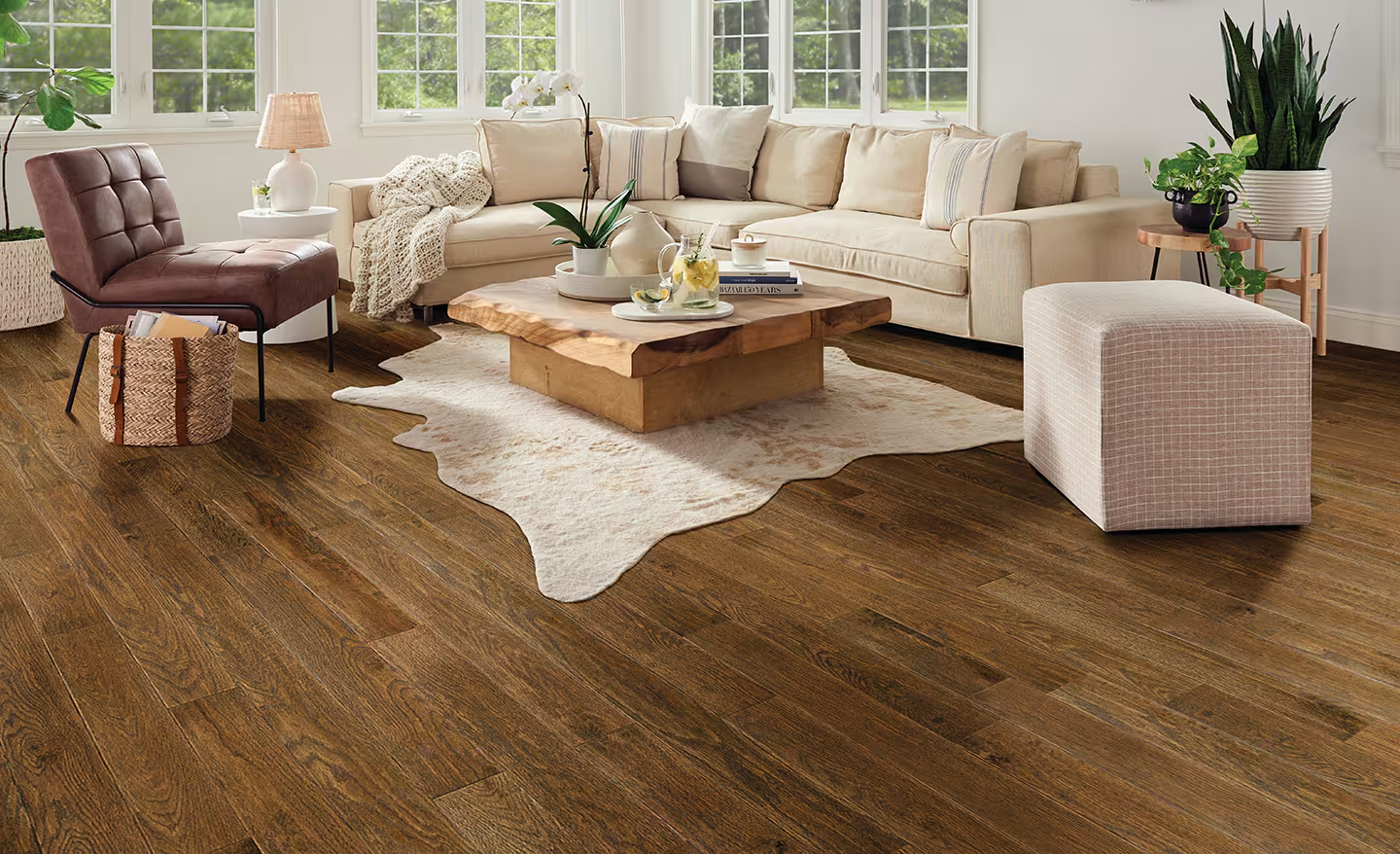DIY-friendly floating floor installation techniques

Let’s be honest. The idea of installing a new floor can feel pretty intimidating. You picture complicated tools, expensive contractors, and a project that drags on for weeks. But what if there was a way to get that beautiful, brand-new floor without the stress and high cost? Well, there is. It’s called a floating floor.
Floating floors are, without a doubt, the DIYer’s best friend. They aren’t nailed or glued down to the subfloor. Instead, the planks or tiles lock together, forming a single, stable “mat” that just… floats. It’s a brilliant system. And with the right techniques, you can achieve a professional-looking result that’ll have your friends asking, “Who did your floors?”
Why a floating floor is your perfect weekend project
So, what makes this type of flooring so DIY-friendly? A few key things. First, the learning curve is surprisingly gentle. Most modern systems use a click-lock or fold-lock mechanism that’s incredibly intuitive. It’s like putting together a giant, incredibly satisfying puzzle for your home.
Second, you don’t need a workshop full of specialized tools. A few basics will get you started. And third, the installation speed is fantastic. You can often transform a room in a single weekend. That’s instant gratification right there.
Gearing up: Your DIY floating floor toolkit
Before you unbox that first plank, let’s talk tools. You don’t need much, but having the right gear makes all the difference. Here’s your shopping list:
- Tapping Block: This is your best friend. It helps snugly lock planks together without damaging the edges. Don’t be tempted to use a scrap piece of flooring—it can break the locking system.
- Pull Bar: Essential for fitting the last row against the wall. It gives you the leverage you need.
- Spacers: These little wedges are non-negotiable. They create the crucial expansion gap around the room’s perimeter, allowing the floor to naturally expand and contract with humidity.
- Utility Knife and a Straight Edge: For cutting underlayment and, if you’re using laminate or vinyl plank, for scoring and snapping planks.
- A Good Saw: A jigsaw is ideal for cutting around door jambs and vents. A handsaw or a table saw will work too.
- Measuring Tape, Pencil, and a Square: The classics. Measure twice, cut once—you know the drill.
The foundation: Prepping your subfloor
This is the most important step, and honestly, the one most DIYers rush. A successful floating floor installation is 90% preparation. Think of your subfloor as the foundation of a house. If it’s uneven or dirty, everything on top will be compromised.
Your subfloor must be clean, dry, and level. Sweep and vacuum thoroughly. Check for levelness with a long straightedge. The general rule is no more than 3/16 of an inch dip over a 10-foot span. High spots can be sanded down; low spots can be filled with a floor leveling compound. It’s a bit of extra work, but it prevents squeaks and premature wear later.
Don’t skip the underlayment
Next up is the underlayment. This foam or felt layer rolls out over your subfloor. It’s not just a cushion for your feet. It provides a moisture barrier, reduces sound, and helps smooth out tiny imperfections. Some flooring products have underlayment attached, which is a huge time-saver. If yours doesn’t, this is a must-do step.
The main event: Step-by-step installation techniques
Alright, the prep is done. Now for the fun part. Let’s lay some floor.
1. Plan your layout
Don’t just start laying planks along a wall. First, find the longest, straightest wall in the room. But—and this is key—your starting row might not be against that wall. You need to plan so that your first and last rows aren’t impossibly narrow. A good rule of thumb is to ensure no row is less than 2-3 inches wide. Dry-lay a few rows to visualize the layout and avoid awkward, skinny pieces at the end.
2. The all-important first row
The first row sets the stage for the entire project. It has to be straight. Place spacers against the wall every foot or so. Lay your first plank with the tongue side facing the room (usually, the tongue is the side that has the groove that faces up). Connect the end joints of the first row, making sure they’re tight. Use your tapping block to gently secure the long-side connections.
3. Stagger those seams
For a natural, strong floor, you need to stagger the end joints. A random pattern looks best. A simple method is to start your second row with a plank cut to two-thirds of its full length. Start the third row with a plank cut to one-third of its length. Then repeat the pattern. This ensures no two seams are closer than 6-8 inches, which is a standard for most floating floor best practices.
| Row Number | Starting Plank Length | Why It Works |
| 1 | Full Length | Establishes the straight line. |
| 2 | 2/3 Length | Creates a strong, visually appealing offset. |
| 3 | 1/3 Length | Completes the repeating stagger pattern. |
| 4 | Full Length | Pattern repeats from here. |
4. The “click and lock” technique
This is the heart of the DIY floating floor installation. For most systems, you’ll angle the new plank’s tongue into the groove of the previous row at about 30 degrees. Then, you gently lower it until it clicks into place. You might hear a satisfying snap. For the long side, you’ll often slide the new plank in horizontally. A gentle tap with the tapping block ensures a tight, gap-free seam.
5. Tackling tricky spots: Doorways and corners
Door jambs are the trickiest part. The pro move is to undercut the door jamb so the plank can slide underneath. You can do this with a handsaw and a scrap piece of the flooring and underlayment as a guide. This creates a clean, professional look where the floor fits neatly under the trim, eliminating the need for clunky quarter-round in that spot.
6. The final row
You’re almost there! The last row is almost always a custom-cut width. Measure the gap at several points along the wall—walls are rarely perfectly straight. Transfer that measurement to a plank, remembering to account for the expansion gap (subtract the width of your spacer). You’ll likely need to use the pull bar to gently coax the last row into place. It can be a tight fit, but that pull bar is a lifesaver.
Avoid these common DIY floating floor mistakes
We all make mistakes. But learning from others’ can save you a huge headache. Here are the big ones to watch out for:
- Forgetting the Expansion Gap: This is the number one error. That floor needs room to breathe. No exceptions.
- Mismatched Underlayment Seams: Don’t let the underlayment seams line up with the flooring seams. Stagger them too.
- Hammering Directly on the Plank: Always use that tapping block. A direct hit from a hammer will chip and break the locking mechanism.
- Not Acclimating the Flooring: Leave the boxes of flooring in the room where they’ll be installed for at least 48 hours before you start. This lets the material adjust to the room’s temperature and humidity.
The final touch
Once the last plank is in, you can carefully remove the spacers. Now, you’ll install baseboards or reinstall your existing ones to cover the expansion gap. Some people add a shoe molding or quarter-round for a finished look. Step back. Admire your work. That beautiful, seamless floor was installed by you.
Installing a floating floor isn’t about perfection. It’s about patience, preparation, and trusting the process. The slight variations, the unique layout of your room—that’s what gives it character. It’s a testament to the fact that with a little know-how, you can truly build the home you want, one plank at a time.





